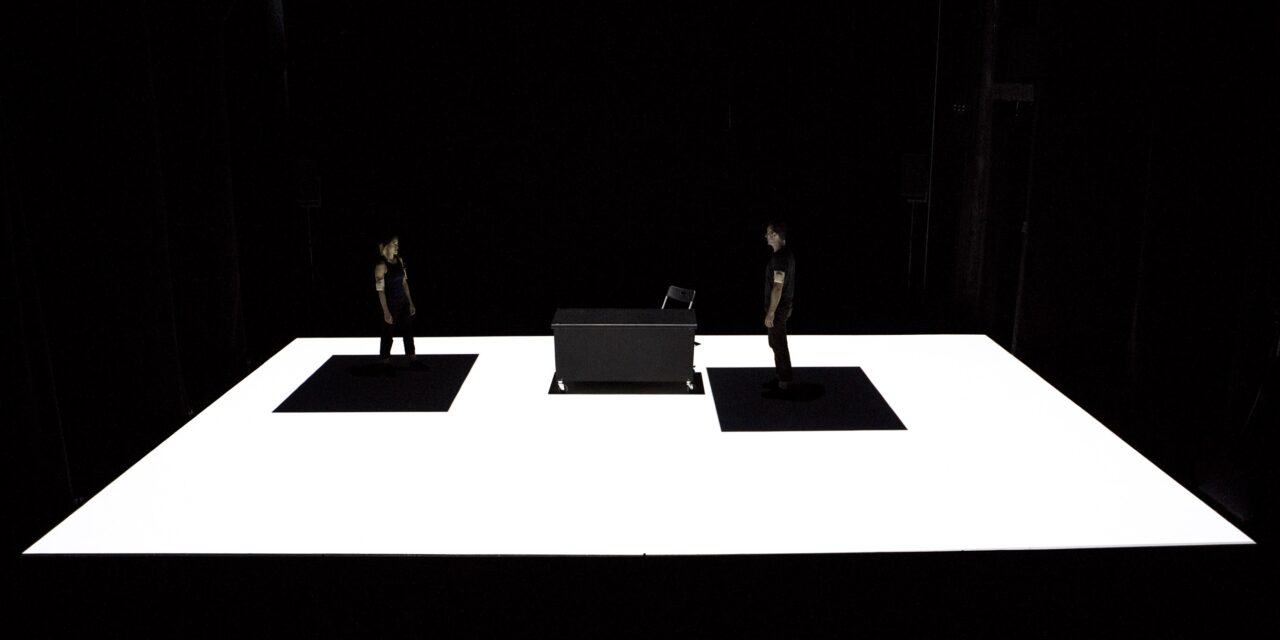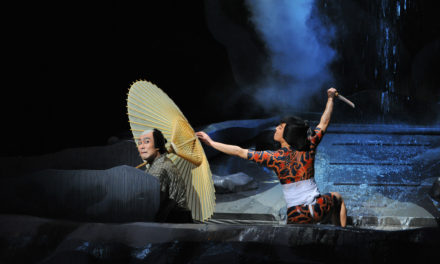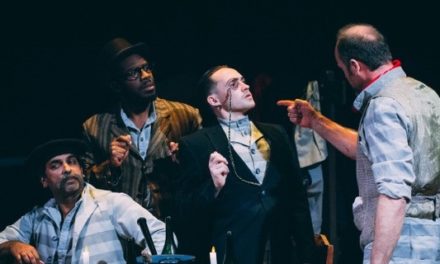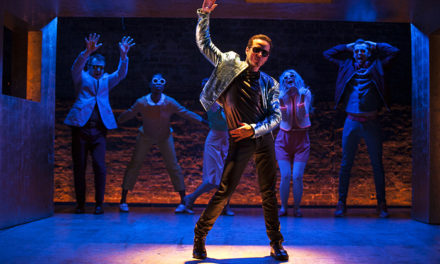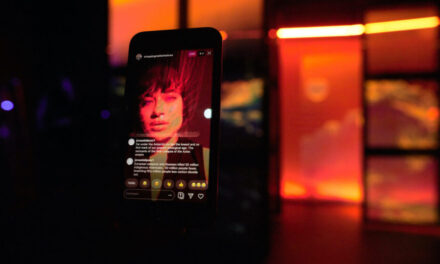Andrew Schneider, a Milwaukee native, is an OBIE Award-winning, Drama Desk-nominated performer, writer, and interactive-electronics artist. His interactive work has been featured in such publications as Art Forum and Wired, among others, and at the Center Pompidou in Paris. He started creating multimedia art as a high school and college photography and musical theatre student. He made homemade films on a VHS camcorder using various mechanical devices. Schneider attended the ITP graduate program at NYU around the time when cell phones came out, which was a dramatic change in the way people communicated. Schneider’s work explores the ambiguous roles that technology and perception play in human experience.
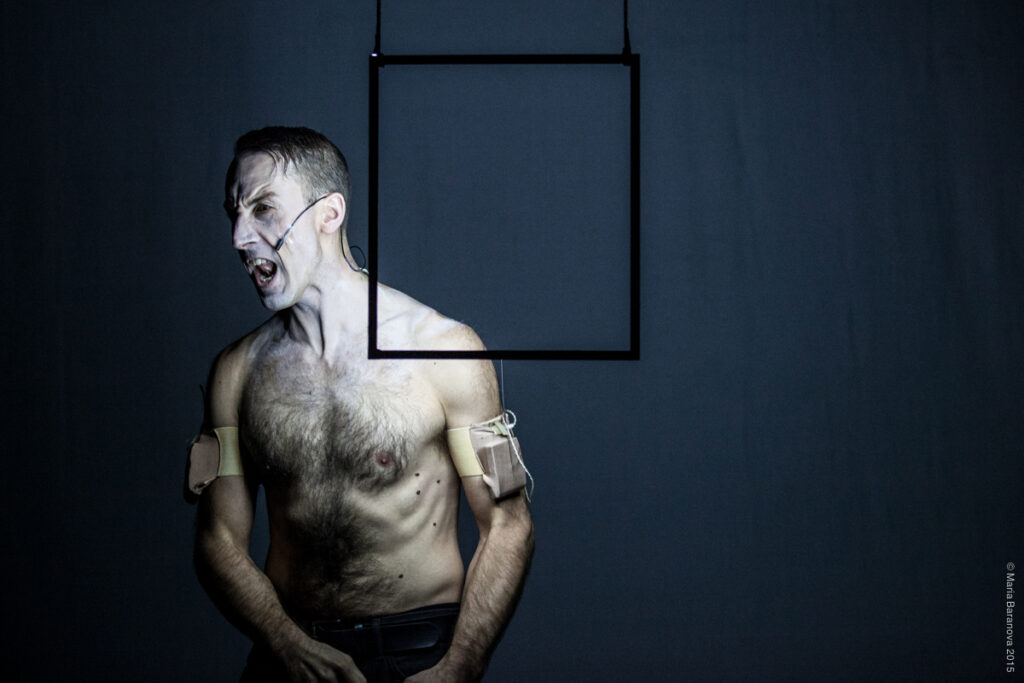
Andrew Schneider YOUARENOWHERE by Baranova
I Yakubovskaya: Why were you drawn to the multimedia aesthetics?
A Schneider: I wanted to analyze and criticize the new forms of communication, cell phones, and the internet, from the inside, which drove me to the ITP grad program. The technology that I was learning was incredible. I began working for the Wooster Group, and in between touring I would come back to NYC and work on my own brand of theatre. I wanted to make something that I hadn’t seen before. I wanted it to feel like the way that I feel reality is. Wooster taught me that we control the story in a different way than by following characters. We can curate emotion without a narrative. I started making work by myself in my apartment on my laptop, and then I made my first show and have been working ever since.
IY: While you have the mastery of technological tools and devices, the primary focus of your work is live theatre. Is it challenging to stay faithful to the theatrical form and yet incorporate multimedia?
AS: With a stage play, we only see what the author allows us to see. We don’t get to see the entire life of a character. I am interested in the moment. The moment without context: it makes the audience put all the things together. The audience gets to make it happen in their head. I think that the cycle [of the new technology] is always happening. I feel particularly lucky to be of the generation that didn’t have a cell phone when I was in high school – no one did. These were such new ways of communicating. At NYU I heard they had a whole class on how to use a cell phone. Any technology that exists in the culture is apt to be represented onstage, and I think there is the literacy reason, and the literacy is mostly generational. As each new technology comes into the mainstream, we criticize it through theatre. Theatre as a form still exists [despite all the technology], which to me is such an incredible testament to its power. People have the opportunity to go to the movies, but people still go to the theatre to watch stories they don’t know being told about human beings they don’t know. The characters are not even real people. The artists and the audience form a contract, everyone knows it, and the audience pays to be manipulated.
IY: Everyone agrees to be part of the collective illusion.
AS: Exactly. It is more powerful even to have permission to stare at a human being, in real life.
Things that are timely are not always lasting. I was trying to put media on the body to mediatize the performer. I realized, much later, that I really wanted the same permission to be with an audience, to have permission to be in a room with a bunch of other human beings, and after 50 minutes of intense dialogue to say “Hey, human being, right? Here we all are.”
IY: The super-objective is to reinstate the importance of the human connection, the actual humanity that is so far from the technology that we make.
AS: I think so. It’s about communication and barriers in communication. At the end of the day, how can we be more human with other humans.
IY: This is quite Chekhovian. Chekhov’s characters, even though they were written more than a century ago, epitomized the lack of communication between people who were often sharing both living space and DNA. Maybe the walls that people build around themselves, whether technology is involved or not, are eternally relevant.
AS: Art tells truth that truth itself can’t. Art tries to speak truth that you can’t say any other way. It doesn’t surprise me that this topic was relevant a hundred years ago, and it will not surprise me if it is still relevant one hundred years in the future.
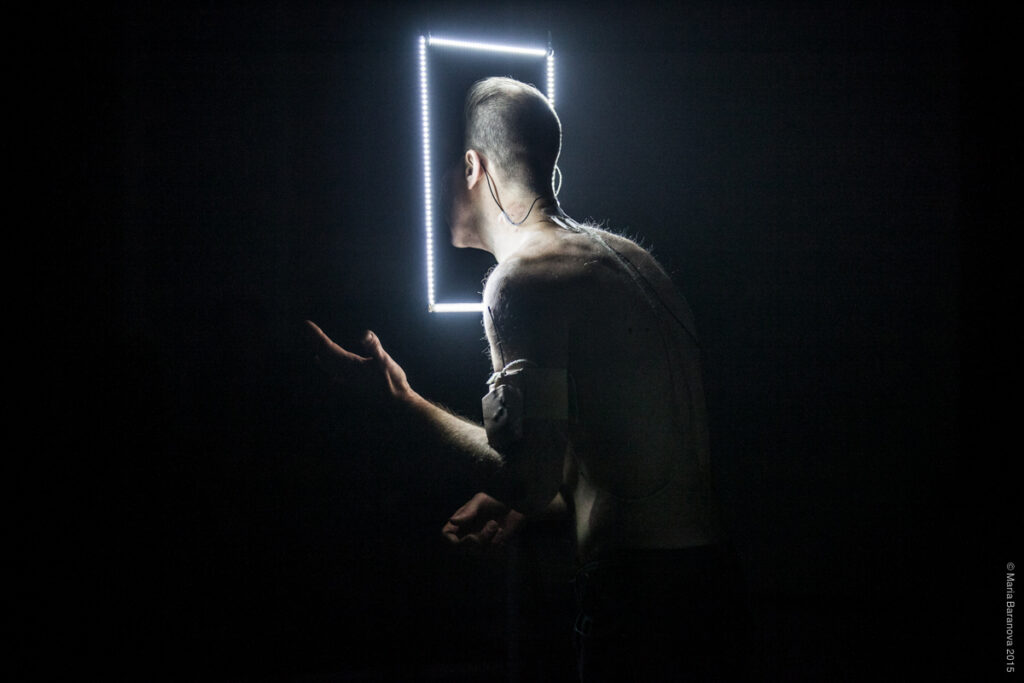
Andrew Schneider YOUARENOWHERE by Baranova
IY: Your Acting Stranger project is unique. It combines the immediacy of technologically advanced reality and the ephemeral essence of performance. It’s like an open scene on steroids. How did you come up with this idea?
AS: There was one thing that gave me the idea. I was on my way to NYU coming out of the subway station. The gate hit the ankle of the woman who was exiting in front of me. I caused this gate to hit her. I didn’t mean to, it was an accident, but she turned around and she looked me straight in the eyes and just started crying, wailing. She said, “Why would you ever do that?” I was so weirdly terrified by it, she was obviously okay, but she had asked me why had I purposefully done that. And I didn’t, it was an accident. I could not stop thinking about this incident. So I staged a public apology in which I had an iPod, which had just come out. I put a video on the iPod, and it was the video of my mouth saying “I am sorry” over and over. I added a little sign, and I went to Washington Square Park to stage this public apology. I would give the headphones to anyone who came up, and put the iPod on my mouth, and it would say “I’m sorry” over and over. I can’t go find that woman and I can’t apologize more. This was a way for me to act out that apology to everybody and have everybody act out an apology with me. They could be the forgiver, and the forgiven. And then I thought – oh what if everyone could just act out the things that they want to act out? We could meet in plain sight, we could meet in public, and what if you could choose from the variety of activities to share: you could slow dance with somebody, or cradle somebody. I think the goal of the project was to provide people with opportunities to share brief moments with strangers, and it completely failed. With Acting Stranger [unlike in an open scene exercise in an acting class], there is no director. What I try to do in those scenes is follow whatever they [strangers] do. I don’t come with a preconceived notion. I try to follow their lead as much as I can so that they can get an experience out of it. Most people who come to do it, I think, are incredibly nervous. They hope that they won’t forget a line or [that they’ll] stand in the right place. If I take a pause because I want to act, they think that they’re forgetting their line, so they jump to the next line. It’s a real thin line. I began by writing abstract things, but then people would get nervous. So later I started writing scenes that were like flirting with somebody or just spooning. So that the people would actually have something [specific] to say. I started marking out where the participants should stand. But overall the description on the website is accurate: there is no preparation, no follow-up, no goodbye. When they show up the camera is already rolling; we interact as characters, and then leave.
IY: While this project certainly involves risks, they don’t differ dramatically from the risks people take every day in the world of omnipresent technology like online dating, ride-sharing, and renting apartments and rooms from strangers. We trust strangers in real life, whether we realize it or not. The Acting Stranger project is like an app for strangers who trust you to share a performance with them.
AS: I always wanted to take myself out of it. However, I know that I will not behave inappropriately in this interaction. If [the scene] were between two strangers, I would not have the same level of control. I am still not sure about the ethics or the safety of it.
IY: How did the NERVOUS/SYSTEM project come about? Was it before neuroscience was a trend?
AS: Has neuroscience ever not been a trend? I made the first show, YOUARENOWHERE, and I didn’t know what I was making until I made it. In the second show, AFTER, I bring the idea of a shared consciousness. One of the most successful moments in the first show and one of the central moments in the second show both had to do everything to do with perception. And with theatre’s ability to manipulate perception in a ton of different ways. Misdirection, literal smoke, and mirrors, there are so many tools. I wanted to build a single field of color that an audience could just look at. And I tried, and I failed for weeks. Eventually, we decided to try a blackout to achieve a desirable effect [of sense deprivation].
I was obsessed with getting this project to be the experience itself as opposed to a design. It is very precise work of achieving the state of being and not representation. I was manipulating people at the level of consciousness. There is a moment in AFTER where we want to induce hallucination in people. I wanted to use perception as the subject of manipulation. It became very clear to me that the only thing people in the audience had in common was that their realities were taking place in their brains. During the twelve-minute blackout in that show, you get to exist with yourself for a while. That is certainly the foundation for thinking about the genesis of the show. I always think about how we do the surgery on perception through giving a theatre experience that is unlike any other experiences. This is different from immersive theatre, where the audiences are complicit. It’s not that they are not complicit in my shows, but there is always a level of ambiguity; you’re not totally sure what’s going on. That to me is what makes me able to keep the audience engaged: the drive to figure out what is going on.
IY: Some people get uncomfortable when their perceptions are deconstructed and made into little particles to be looked at under a microscope. What sort of feedback do you get from your audiences? Did you ever make anyone uncomfortable to the point where they felt like they needed to tell you about it?
AS: My worst nightmare is having someone be uncomfortable to the point of not wanting to be there. I am always upfront about the lighting, the coarse language in the shows. In college, I realized this idea about shocking or implicating the audience, and I thought it was strange, and I didn’t believe in it. When I experienced it, I found it to be ineffective.
Even though the first moment of the first show [YOUARENOWHERE] is incredibly harsh, loud and bright, I think we do it very carefully and in a technically nuanced way because we want the audience to feel it. No one has ever left the audience despite the sensory overload. One person left once during the long blackout scene in a show in which the sound malfunctioned, and the row where this person was sitting was simply in silence for twelve minutes [of darkness].
I want to have a conversation with the audience, and to do that they have to want to participate. You can’t ask them to. Every step of this way I invite them to take another step with me. I understand that people go to the theatre for an escape, and we try to provide an experience that combines an escape but also puts you in touch with yourself. I make these shows because this is how I experience the world. I am very interested in what our subjective realities are. I do want to provide a meaningful experience to anyone. My goal is to keep expanding.
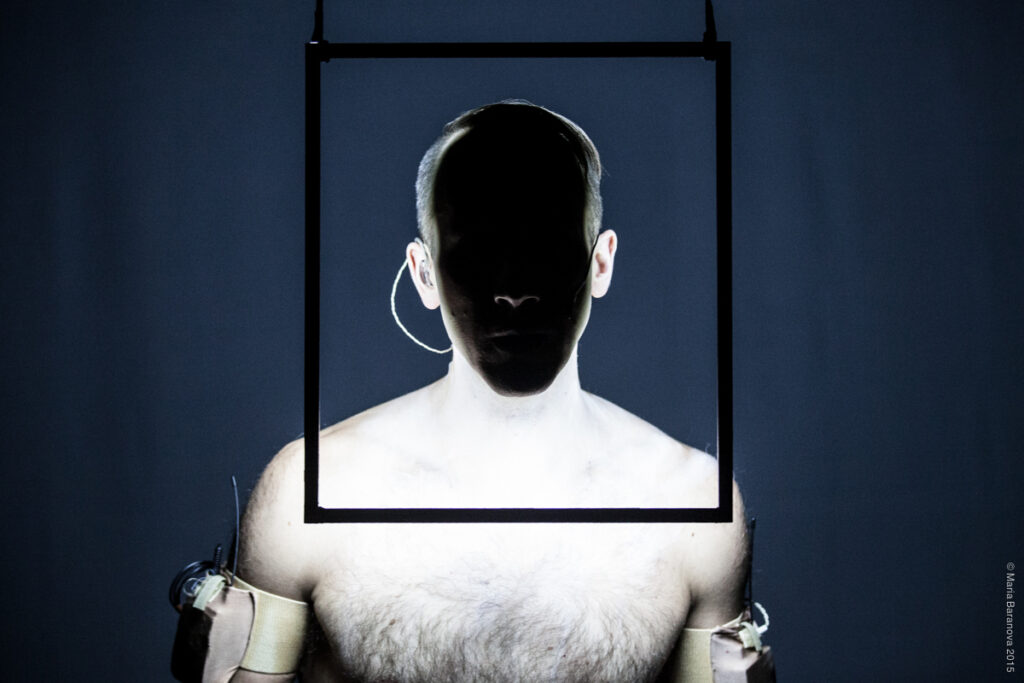
Andrew Schneider YOUARENOWHERE by Baranova
This post was written by the author in their personal capacity.The opinions expressed in this article are the author’s own and do not reflect the view of The Theatre Times, their staff or collaborators.
This post was written by Irina Yakubovskaya.
The views expressed here belong to the author and do not necessarily reflect our views and opinions.

